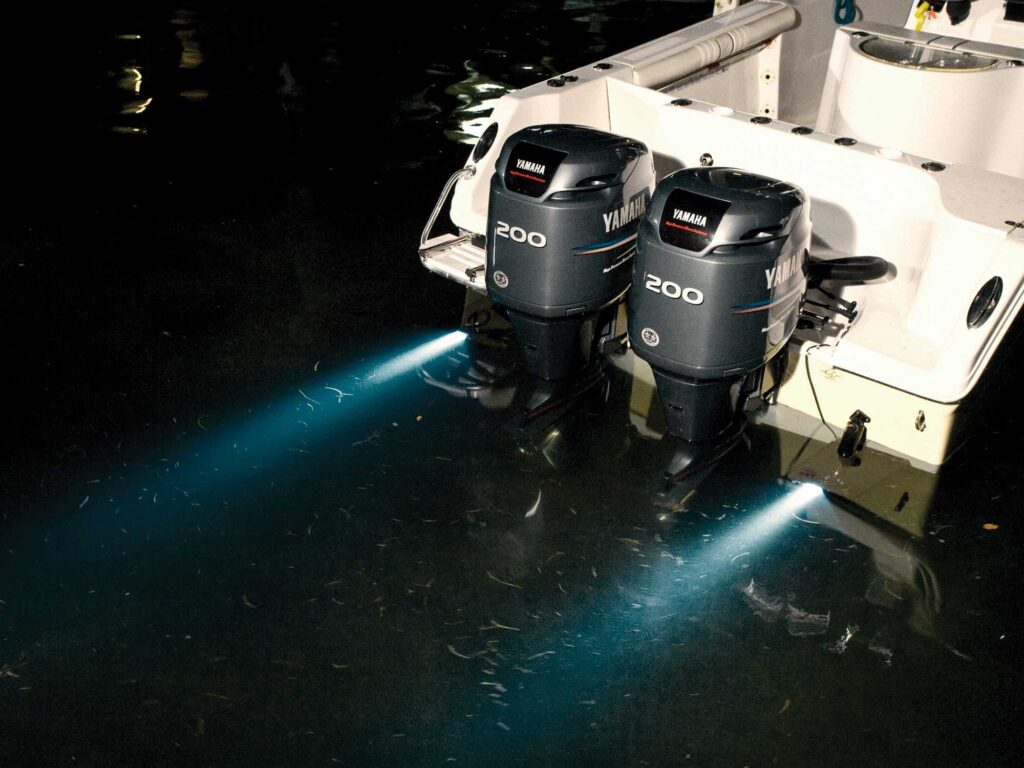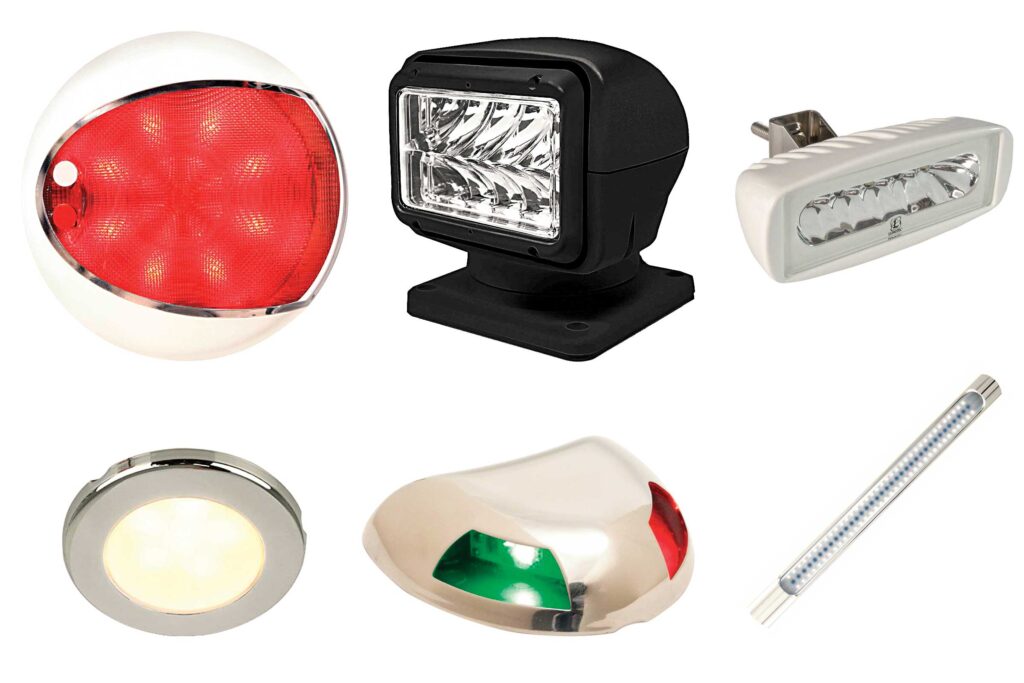
Energy-efficient technologies are revolutionizing industrial, residential and automotive markets, but they also benefit today’s boaters. No energy-saving advancement has proven more poignant to boaters than LED lights. The fact is, it’s hard to find any new boat with old-fashioned incandescent lighting these days. LEDs (light-emitting diodes) have virtually supplanted incandescent lights in the marine market for navigational and general nighttime illumination.
Marine LEDs powered by 12-volt DC circuits are available in a mind-boggling array of lighting fixtures for navigation, flood, search, underwater, cabin, courtesy, livewell and accent lights from a host of brands, including Aqualuma, Hella, Imtra, Lumitec, Lumishore, OceanLED, Rigid, Taco Marine and many others. Each fixture is compact, bright and, very importantly, extremely energy-efficient compared to incandescent lights. This reduces strain on electrical circuits and conserves precious marine battery reserves.
Need an example? An old-school 50-watt Jabsco Halogen incandescent flood (aka spreader) light draws 4 amps at 12 volts DC and produces 9,900 candlepower. By comparison, the 12-watt Lumitec Caprera2 LED spreader draws just 1.3 amps at 12 volts DC and produces 1,000 lumens, which roughly translates to 12,570 candlepower. What’s more, the color in which it shines is switchable between pure white and brilliant blue.
In addition, LED fixtures are more compact. The face on the Jabsco, for instance, measures 3-by-5 inches, while the face on the Caprera2 LED is just 2-by-4.5 inches. LEDs also produce far less heat than incandescent lights, a result of the inherent energy efficiency of this technology.
However, LEDs are not without downsides, including greater purchase prices. The Jabsco Halogen incandescent spreader, for instance, retails for as little as $68, while the Lumitec Caprera2 spreader sells for around $135 or more. On the other hand, LEDs last much longer. The Caprera2 has an expected output life of 22,000 hours. The Jabsco bulb life is rated at just 450 hours.
LED technology enables illumination in a wide array of colors, allowing you to change the shading of accent or underwater lights via Wi-Fi with a smart mobile device. Some marine LEDs can be set to strobe to the beat of music, and many marine audio speakers feature built-in multicolor LEDs. What’s more, some offshore anglers believe that underwater LED strobe lights can help pull pelagic fish to the boat during daylight hours.
While virtually all new saltwater fishing boats feature LED lighting, many older boats still have incandescent lights. But when these lights require replacement due to breakage or corrosion, boating anglers can replace them fairly easily with LEDs. In fact, LEDs could be the only marine illumination available soon as old-fashioned lights are gradually phased out. However, there are five factors to keep in mind when it comes to LED retrofits.
Read Next: How to Use Fishing Lights

Don’t install nonmarine lights on your boat. Marine-grade LEDs feature housings that resist UV light, corrosion and water intrusion, while others tailored for automotive or residential use can quickly succumb to the rigors of briny applications. Look for the highest waterproof ratings of IP6, IP6K or IP9K.
Ensure LEDs meet Coast Guard regulations. They should also comply with guidelines set by the American Boat and Yacht Council. Red (port) and green (starboard) side marker lights, for example, should illuminate a sector spanning 112.5 degrees from dead ahead to aft on each side. What’s more, nav lights—including the white all-around light—should meet the Coast Guard and ABYC requirements for visibility range. For boats under 40 feet in length, the required range is 2 nautical miles.
Look for LEDs with the same footprint. This will save you time, work and money in patching or enlarging holes, or creating an adapter for the new LED fixture. For example, Hella’s Slim Line LED courtesy lights will fit the same hole as the popular Perko round incandescent courtesy lights.
Avoid electromagnetic interference (EMI). Microcircuits continually switch voltage off and on to the LED. If the LED circuit regulator is not properly shielded, the wire leading to an LED emits EMI that can interfere with onboard electronics, such as VHF radio interference, static on a stereo, and hash on a fish-finder screen. To avoid EMI, look for the CE designation on the marine LED fixture. This indicates that the manufacturer has complied with Conformité Européenne (European conformity) in shielding the LED.
Colored LEDs can create legal issues. The Coast Guard has issued a warning that haphazard placement and use of decorative, multicolor LEDs such as rope lights or underwater lights might violate federal navigational lighting regulations. “For instance, blue underwater LED lights can appear to be flashing if there is any wave action, giving the appearance of a flashing blue light only authorized for use by law enforcement vessels,” a Coast Guard bulletin states.
The key here is to carefully select, install and utilize marine LEDs. They will improve your ability to see and be seen at night while easing onboard battery management by conserving power.









